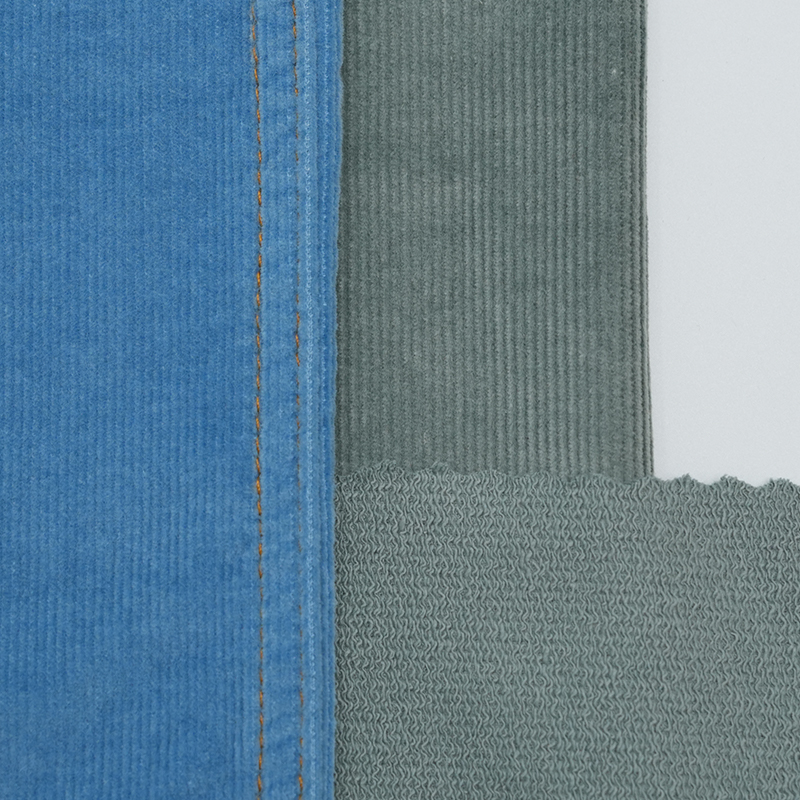Production of various high-end fabrics reaches 7 million meters annually, including a wide range of fashionable new products and exquisite items, with a broad coverage of color patterns.
Cotton-Blend Corduroy Dyed Fabric: Where Classic Texture Meets Contemporary Innovation
2025-05-30
Corduroy has long held a revered place in the world of textiles—a fabric synonymous with timeless elegance, tactile warmth, and casual sophistication. Yet, in a rapidly evolving fashion landscape where utility must meet innovation, the classic must evolve. Enter the cotton-blend corduroy dyed fabric: a modern reinvention of a heritage textile that balances tradition with performance, comfort with character.
This new breed of corduroy marries the natural softness of cotton with the structural integrity of synthetic fibers—typically polyester or elastane. The result is a hybrid material engineered for durability, resilience, and elevated visual appeal. The added synthetics help the fabric retain its shape, reduce wrinkling, and enhance stretchability—all while maintaining that signature ribbed texture that corduroy is celebrated for.
What sets the dyed version of this cotton-blend apart is not just its construction but its chromatic depth. Traditional corduroy often comes in subdued, earthy tones—a nod to its utilitarian roots. But the dyed variant unlocks a spectrum of rich, saturated hues. From deep garnet reds and forest greens to muted slate and vibrant cobalt, the color retention is intensified through advanced dyeing processes. These techniques not only preserve the vibrancy of color through multiple washes but also add a layer of sophistication that elevates the fabric for both casual and formal applications.
Functionality, too, plays a central role. Cotton-blend corduroy dyed fabric is remarkably versatile. Lightweight versions offer breathability for transitional weather, while heavier grades provide insulation for winter wear. This makes it a top-tier choice for tailored jackets, pants, skirts, and even home textiles like cushions or drapery. The inherent ribbed structure provides a tactile richness that captures light in dynamic ways—creating subtle shifts in tone and texture that bring garments to life.

Beyond aesthetics and performance, there's a tactile intimacy to corduroy that appeals to both designers and wearers. Its distinctive wales—the raised ridges that define its surface—vary in width and frequency, offering another layer of customization. Fine-wale corduroy presents a sleek, refined look ideal for more formal garments, while wide-wale iterations project a relaxed, retro-inspired aesthetic. When dyed, these wales gain even more dimension, as the color settles differently into the ridges and grooves, producing a tonal play that’s both unexpected and visually compelling.
Sustainability, too, is gaining ground in the production of cotton-blend corduroy. Many manufacturers now opt for organic cotton and recycled synthetics to reduce environmental impact. Low-impact dyes and closed-loop dyeing systems are increasingly employed to conserve water and minimize chemical runoff—reflecting a broader industry shift toward responsible textile production.
In terms of care, the fabric is relatively low-maintenance. Thanks to its synthetic components, it resists shrinking and holds color far better than 100% cotton alternatives. It’s less prone to pilling, stands up well to regular laundering, and offers long-term wearability—a compelling choice for consumers seeking both quality and value.
Cotton-blend corduroy dyed fabric is not just a revival; it’s a reimagining. It retains the charm of vintage fashion while embracing the demands of contemporary life. It’s a textile that tells a story—of craftsmanship, of innovation, of a fabric that adapts without losing its soul.
In a world where materials must work harder, last longer, and look better, cotton-blend corduroy dyed fabric delivers. Rich in texture, bold in color, and grounded in performance—it is, quite simply, corduroy without compromise.

 English
English 中文简体
中文简体 Tiếng Việt
Tiếng Việt




















